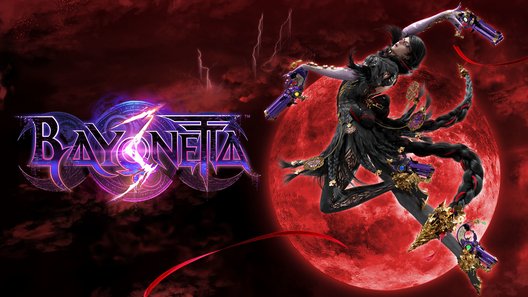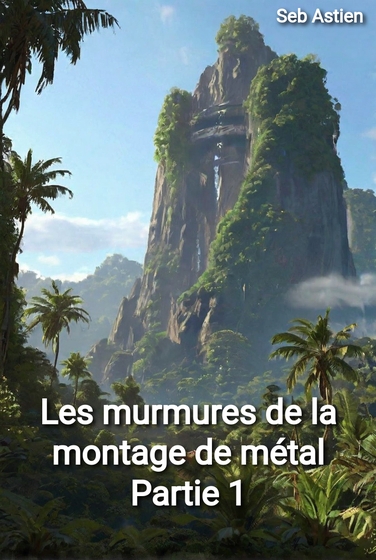Bayonetta 3

Third entry in our series of articles about Bayonetta, we’re now talking about the third game, Bayonetta 3, still developed by PlatinumGames and edited by Nintendo, released on October 2022 for Nintendo Switch. Announced in 2017, the game development took a lot of time with a very few news about it, and finally showed some images in 2021 during a trailer with its titular Witch saying “Sorry, I’m terribly late”.
In an alternate universe, Bayonetta is fighting against a being named Singularity, an artificial human entity seeking absolute power over the multiverse with his “Homunculi” creatures. She is ultimately killed in front of Viola, a young witch who is sent to another universe thanks to the sacrifice of her companions. Arrived in the universe of “our” Bayonetta, she discovers the “Homunculi” had already started to attack this iteration, fought by Bayonetta and Jeanne in New York City. Viola has been taken in refuge by Rodin and Enzo in the bar “The Gates of Hell” where the young girl could explain the situation. To stop Singularity, they have to go to the island of Thule, the place of a gateway between the universes, to seek for the Chaos Gears, some strange devices that could open the “Alphaverse” where Singularity resides. Bayonetta and Viola goes there, while Jeanne is tasked to infiltrate a research facility to find a scientist, the professor Sigurd, a researcher designed by Viola as an expert on the multiverse.
Bayonetta 3’s story has been quite confusing for me. While the two previous opus were pretty clear, this one is more difficult to follow because the narration is cut between the three protagonists path. Indeed, the stages are alternated between Bayonetta, Viola, and Jeanne sequences, with each of them having its own parallel story line. Bayonetta’s story is mainly following her exploring various multiverses iteration where she encounters other versions of herself fighting to save their worlds. These versions are very different with specific outfits, weapons, and behavior. They also have a specific signature demon which is temporary used during the stage. Viola’s story begins along with Bayonetta but she’s quickly spread appart while she tries to follow Luka and a mysterious powerful werewolf. Jeanne’s parts are the most different ones, her infiltration in the research facility is presented as a 2D view of a platform game with stealth features. Oh, BTW, the introduction sequence is again exactly the same as the two previous game. I don’t know if it’s a wanted thing or a lazy choice, but I think they could have done some different plot to give the games a more specific identity.
The new character, Viola, is quite disappointing to me. She is clearly the archetype of the wanabe-cool-teenage-girl, learning to be a Witch, but she’s also clumsy and always get into trouble. Her first gameplay sequences are quite slow compared to Bayonetta’s moves and I really don’t like her “finish” stance when she opens the sealed arena. About her character, I’ve preferred her infernal demon Cheshire who is funnier and full of surprises.
Bayonetta 3’s gameplay is an evolution of the two previous games. It removed the “Climax Summon” and “Umbran Climax” feature from the second one and introduced the “Demon Slave” and “Demon Masquerade” mechanics. This feature allows the player to take directly control of Bayonetta’s infernal demon during a short time during the fight. She can “equip” 3 of them at once and switch between them. This feature is also used to resolve some exploration puzzle. Bayonetta can also fuse with her demons for a short period of time during specific gameplay sequences. Another feature is the variety of weapons Bayonetta can equip, changing her combos and attacks. Viola can also use the “Demon Slave” feature, but she has only one demon, Cheshire, and it cannot be directly controlled. Jeanne’s gameplay parts feature a stealth infiltration 2D-view platform game where she has to hide from enemies or silently kill them. As her magic powers are sealed in the facility, she can use her guns and also some bonus weapons like rocket launchers or shotguns. This part of the game has a specific ambiance with an opening credit sequence. The only thing I didn’t liked in Jeanne’s part is the limited time for the levels.
The game’s levels are far bigger than the previous one. There is also a lot a replay value because of hidden collectible, challenges, and unlockable modes. However, I’ve found the levels were quite empty. Maybe my memories are wrong, but I though Bayonetta 2’s fights were more frequent in the levels exploration. In this one, we can do some very long walks in empty corridors. The levels details are pretty nice in the artistic direction and we visit various places including IRL ones. I’ve been positively surprised by Paris level with very detailed imaginary shops facing (“Citron Télécom” made me laugh - probably a reference to Orange, the main ISP in France) perfectly written in French in the game. Also, the police voices in Japanese audio we hear in this level were recorded in French. In another level we also hear some soldiers speaking in English.
On the technical level, Bayonetta 3 had some issues. There were regular framerate dropping issues and also ugly textures during some exploration sequences and cut scenes. The various gameplay sequences were we play the Infernal Demon are nice, but terribly slow, quite frustrating as we are used to fast action in this game series.
I must admit I’ve been quite mitigated during this game run. The gameplay is still incredible and the Demon control feature raised it to another level. However, the messy story confused me and it’s too predictable plot twists remove some enjoyable parts of the discovery. Now, I wonder what will be the next step in the series.
